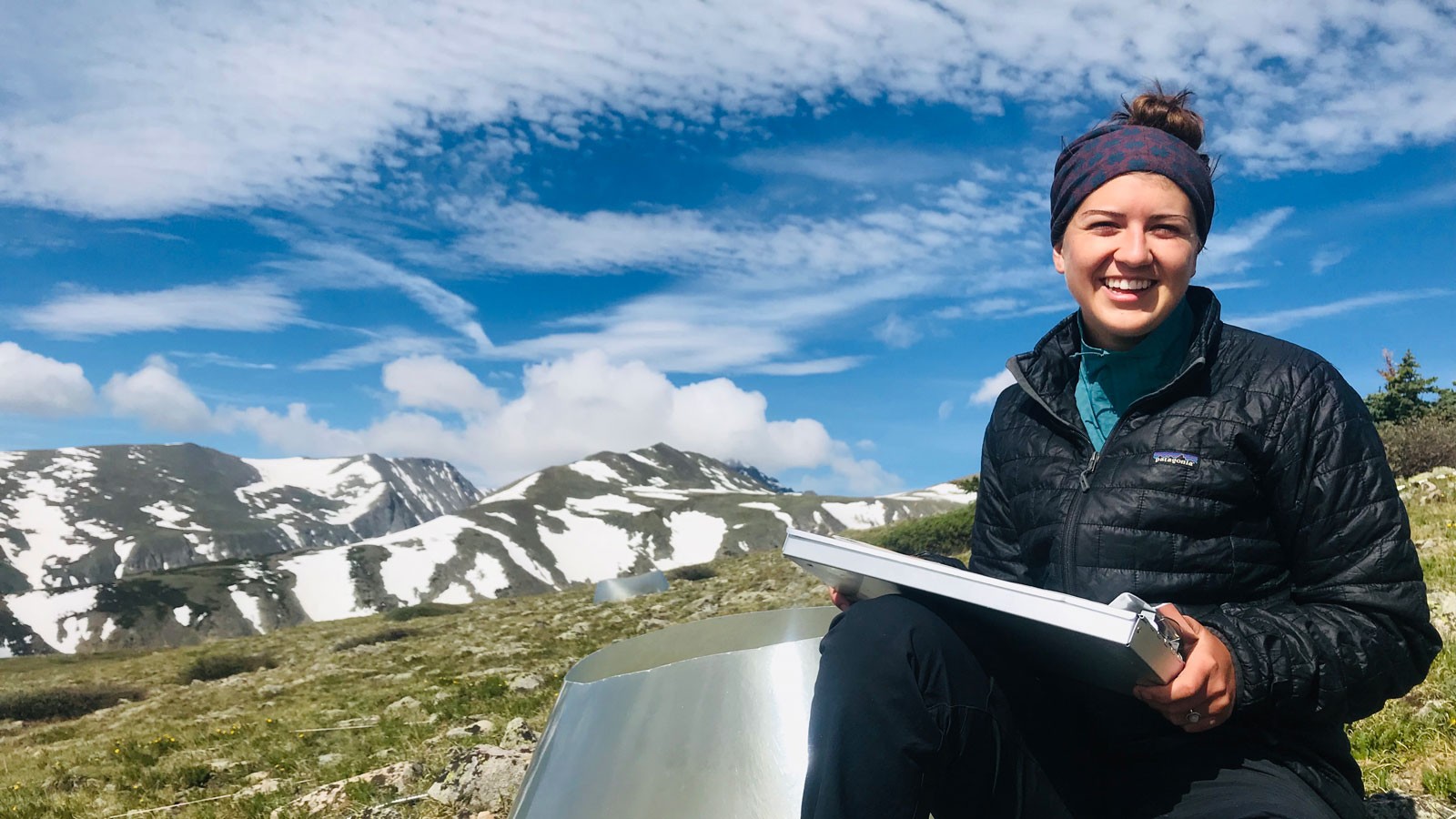One Size Doesn't Fit All: No Universal Soil Response to Nitrogen Deposition Says USU Ecologist
Doctoral candidate Savannah Adkins discusses soil carbon cycling at the 2023 Ecological Society of America Annual Meeting.
By Mary-Ann Muffoletto |
USU doctoral candidate Savannah Adkins, shown here beside a warming chamber at Colorado's Niwot Ridge Long-term Ecological Research site, will present soil carbon cycling research Aug. 9 at the 2023 Ecological Society of America Annual Meeting in Portland, Oregon.
Soil, that loamy, gritty dirt under your feet, plays a huge part in both the progression and mitigation of climate change, says Utah State University ecologist Savannah Adkins.
“That’s because soil stores an immense amount of carbon that once existed in the atmosphere as carbon dioxide,” says Adkins, a doctoral candidate in USU’s Department of Biology and Ecology Center.
Soils remove some 25 percent of carbon dioxide produced annually by fossil fuel burning from Earth’s atmosphere, she says, and could potentially remove as much as 35 percent of total greenhouse gases.
Eliminating that much excess atmospheric carbon dioxide would help prevent the worst effects of climate change, she says, but there’s a downside.
“Soils also release carbon dioxide back to the atmosphere and, as climate change progresses, soils will release even more carbon dioxide, adding to the negative effects of climate change,” says Adkins, who conducts research with USU Biology Professor John Stark. “My research aims to better understand soil carbon cycling under the progression of climate change with the hope of driving management plans focused on enhancing soil carbon storage.”
Adkins presents this research with the contributed poster, “Nitrogen Deposition is Not an Indicator of Continental-Scale Soil C Sequestration,” at 5 p.m. Pacific on Wednesday, Aug. 9, at the 2023 Ecological Society of America Annual Meeting at the Oregon Convention Center in Portland. She’s among nearly 30 Aggies from throughout the university presenting at the gathering, which attracts some 3,000 attendees from throughout the United States and other countries.
Nitrogen is essential for all life on Earth, Adkins says, and, if not available in sufficient quantities, limits overall plant and animal growth. Development of the Haber-Bosch process in the early 20th Century enabled commercial-scale production of nitrogen fertilizer — a boon to crop yield, animal stock production and, ultimately, the human population.
“But a significant amount of nitrogen fertilizer used across the agricultural sector is lost to surrounding ecosystems,” she says. “It has potentially negative effects on soil health and plant growth, which can lead to these ecosystems losing carbon to the atmosphere.”
Many scientists once assumed ecosystems were nitrogen-limited, meaning excess nitrogen from agricultural activities would enhance plant growth and soil carbon storage.
“But we’re discovering evidence that’s not true for all ecosystems,” says Adkins, who was awarded USU’s Joseph E. Greaves Endowed Memorial Scholarship and received an honorable mention from the National Science Foundation Graduate Research Program search in 2021. “Rather, nitrogen deposition to ecosystems that are not nitrogen-limited causes soil acidification, and inhibits plant growth and soil function.”
How do scientists and land managers know which ecosystems are nitrogen-limited and which aren’t?
“We found soil pH is a more reliable indicator of whether or not a soil will become a carbon source or sink, than how much nitrogen is in the soil,” Adkins says. “Soil pH is much easier to measure than soil-available nitrogen and, while there are a few caveats, decreasing soil pH may be an indicator of increasing soil carbon.”
For this reason, she says, soil pH can be used in biogeochemical models to project soil carbon losses and gains, and therefore, how well soils will promote or mitigate climate change.
Adkins cautions there’s no “universal soil response” to nitrogen deposition.
“While soil pH is the most accurate predicator of soil carbon dynamics, we know less about how soil pH mechanistically affects soil microbial function, which is the ultimate controller of soil carbon,” she says.
WRITER
Mary-Ann Muffoletto
Public Relations Specialist
College of Science
435-797-3517
maryann.muffoletto@usu.edu
CONTACT
Savannah Adkins
Doctoral Candidate
Department of Biology and Ecology Center
435-797-2485
savannah.adkins@usu.edu
TOPICS
Research 879stories Environment 263stories Agriculture 225stories Ecology 173stories Biology 166stories Sustainability 145stories Soils 27storiesComments and questions regarding this article may be directed to the contact person listed on this page.







